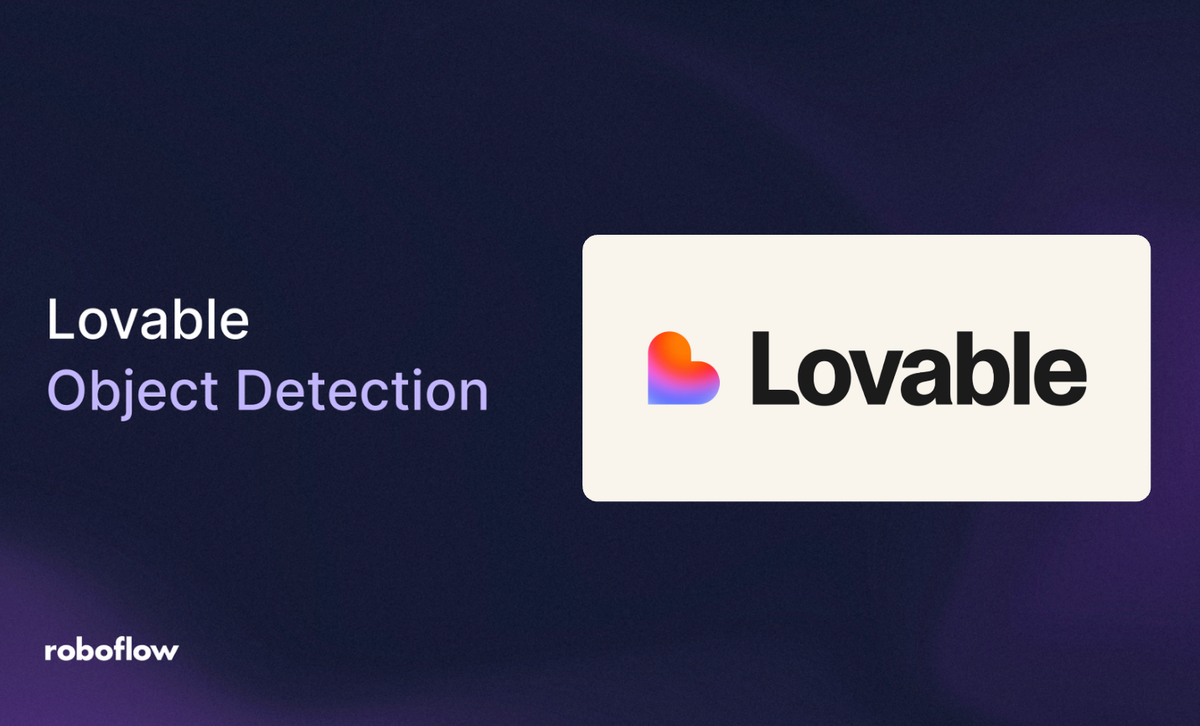
Computer vision (CV) is revolutionizing sectors like farming, medicine, retail, and production by empowering systems to understand visual information. Tasks that once demanded deep machine learning knowledge, such as identifying objects or classifying images, are now within reach for all, thanks to advanced large language models (LLMs) and Roboflow’s robust platform. With these tools, you can create powerful vision applications in just a few hours, no matter your programming background.
This tutorial guides you through developing a CV app using Lovable, a dynamic coding and hosting platform, combined with Roboflow’s API-driven ecosystem. You’ll discover how to locate pre-trained models on Roboflow Universe, fine-tune settings like confidence levels through prompts, deploy apps on Lovable, and ensure adherence to model licenses to avoid legal pitfalls.
Our sample app will count avocados in images, demonstrating how Lovable and Roboflow streamline the process from start to finish.
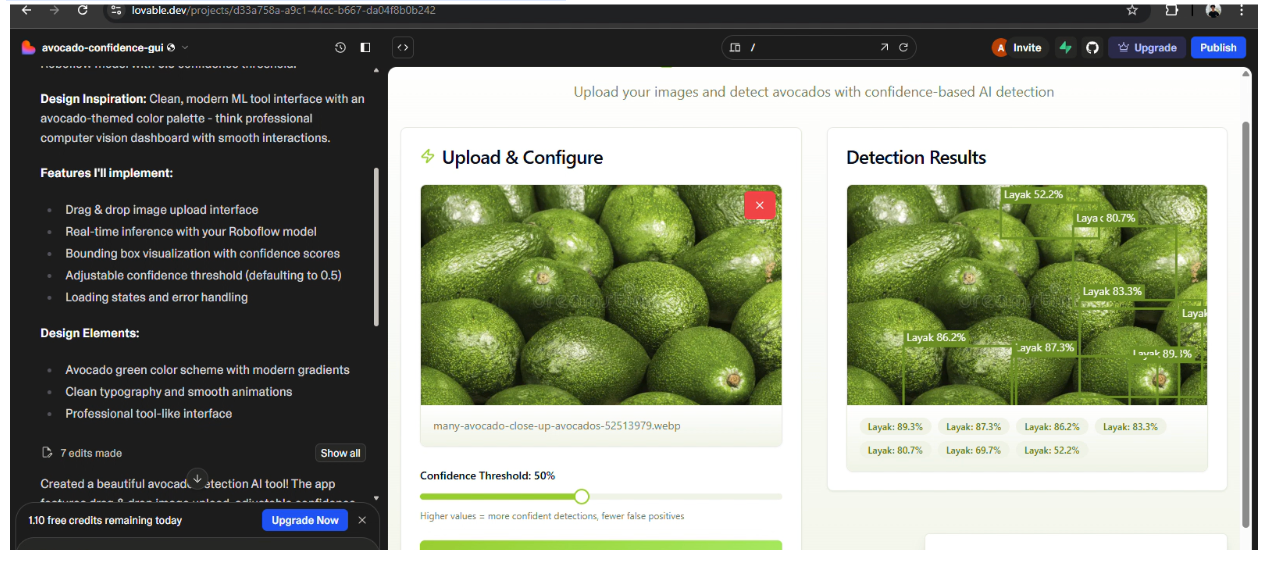
Why Pair Lovable with Roboflow?
Roboflow’s API-centric platform integrates effortlessly with Lovable, an AI-powered environment that enables you to build, run, and deploy web applications using natural language instructions. Lovable eliminates manual coding by generating full-stack apps (often in Python or JavaScript) based on your prompts. This synergy makes CV accessible to novices and professionals alike, enabling rapid creation of interactive vision apps.
Unlike some LLMs that only produce text-based code, Lovable excels by executing and hosting apps directly, providing intuitive interfaces without the need for server configuration.
Top LLM Tools for Roboflow
While several LLM-driven tools pair well with Roboflow, this guide highlights Lovable for its seamless execution and deployment features. Lovable’s interactive platform allows you to prompt, run, and host apps without writing code, unlike text-focused LLMs like Claude, which are better suited for tasks like model discovery.
Step-by-Step Guide to Building CV Apps with Lovable and Roboflow
Here’s how to create a strawberry-counting app using Lovable and Roboflow’s API, without writing any code.
Step 1: Get Your Roboflow API Key
Create a free account at roboflow.com.
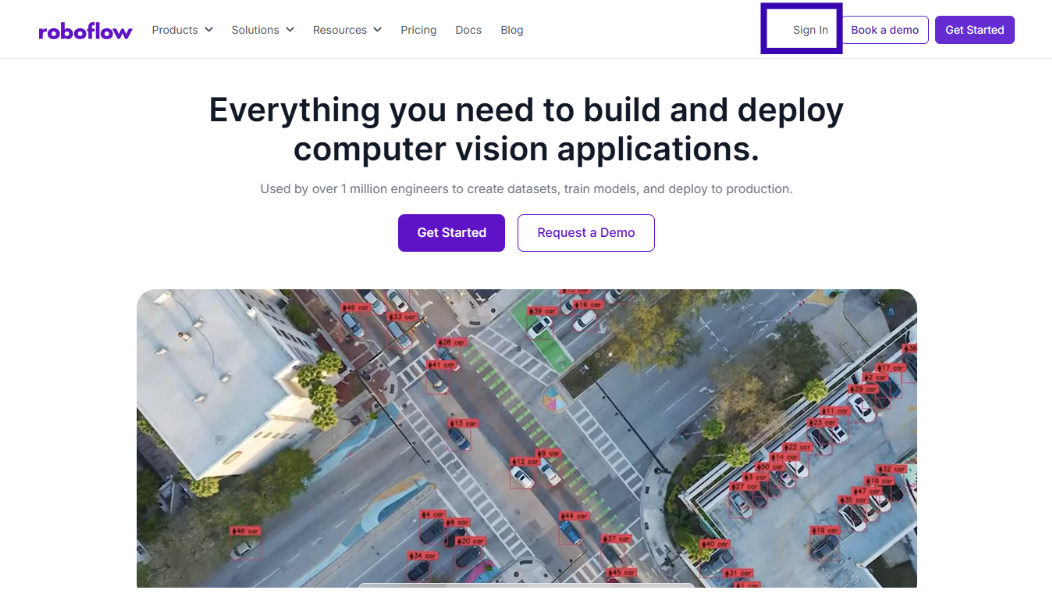
Navigate to Settings > API Key (top-right) and copy your private key.
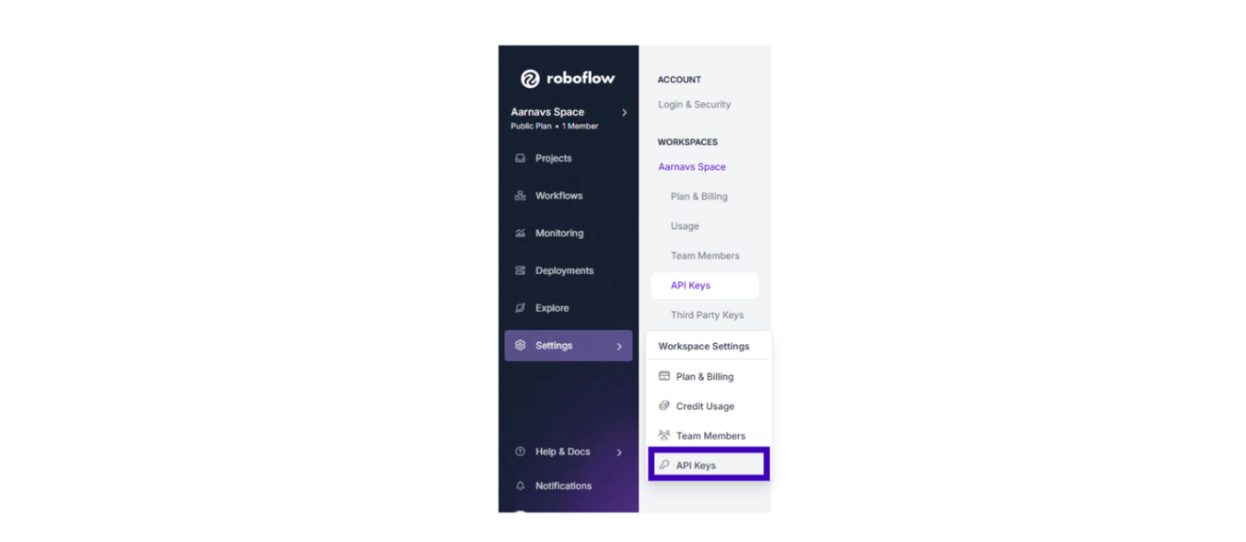
This key grants access to Roboflow’s API for model execution.

Share the key securely with Lovable via prompts (e.g., as an environment variable). For production, store it in a .env file or secret manager; never embed it directly in scripts.
Step 2: Locate a Model with Lovable
Roboflow Universe hosts over 50,000 pre-trained models and 250,000 datasets for tasks like object detection, classification, and segmentation. Use Lovable to find a suitable model without writing code.
Sample Prompt for Lovable:“Search Roboflow Universe for a model to count avocados in images. Return only the model link, no app creation.”
Lovable may suggest a model like https://universe.roboflow.com/yo-man-engm8/avocado-detection-ffp7a . Visit the model’s page, navigate to the “Model” tab, and note the model ID (e.g., avocado-detection-ffp7a/2).
Test the model by uploading a sample image (e.g., avocados in a crate) on Universe’s web interface to confirm accurate detection. Use filters like “Has a Model” and check metrics like precision or mAP to ensure the model meets your needs. For avocados, a model trained on 500 images typically performs reliably.
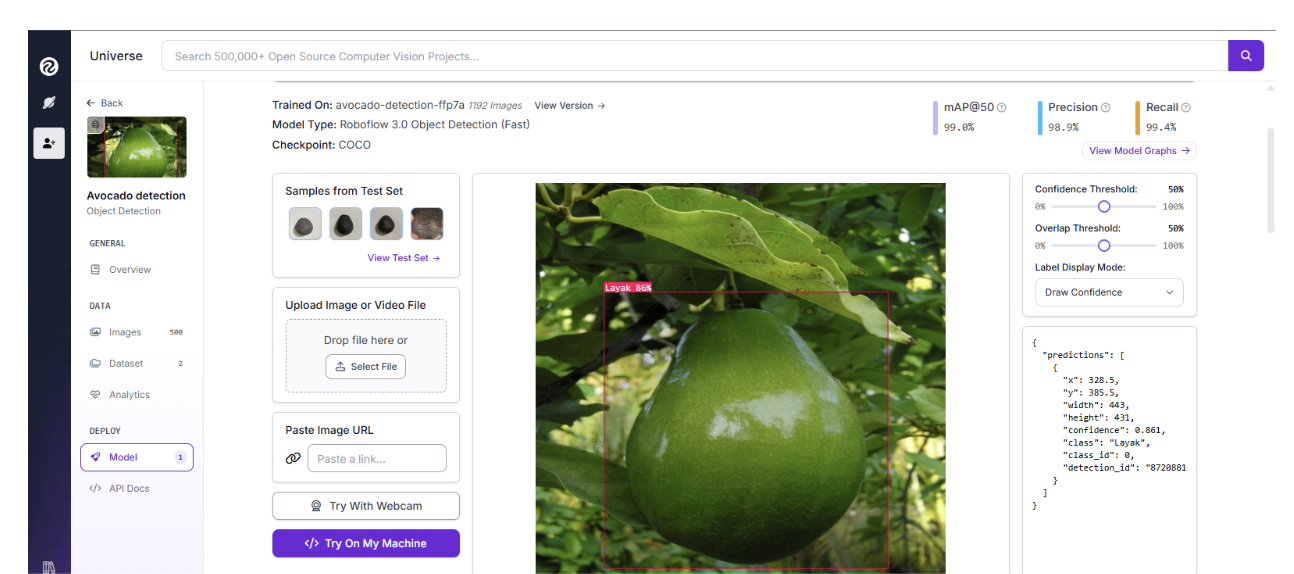
Step 3: Run Inference with Lovable and Roboflow’s API
Using the model ID and API key, prompt Lovable to perform inference via Roboflow’s API and create an interactive interface for uploading images.
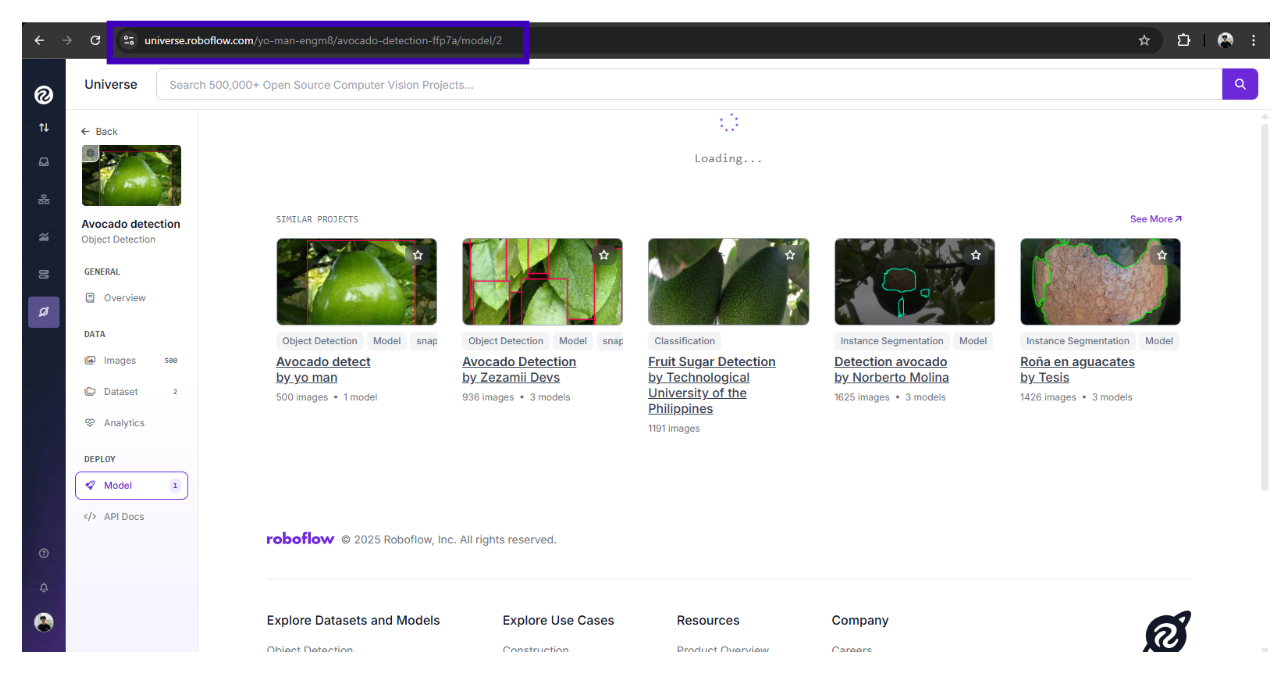
How to Obtain the Model URL:Find the model URL on the Roboflow Universe model page under the “Model” tab.
Sample Prompt for Lovable:“Adjust the confidence of this model: https://universe.roboflow.com/yo-man-engm8/avocado-detection-ffp7a/model/2 to 0.5 using my api_key (insert your own API key). Let me run a GUI using my own images.”
Lovable will generate and run a web app without requiring you to code. The app provides an intuitive interface for uploading images, displaying avocado counts, and showing bounding boxes with confidence scores. A 0.5 confidence threshold ensures detections are at least 50% reliable, reducing false positives.
Tips for Success:
- Precise Prompts: Include the model ID (e.g., avocado-counter-xy34/3) in your prompt to avoid errors.
- High-Quality Images: Use clear, high-resolution images to boost detection accuracy. If images are blurry, prompt Lovable: “Enhance image quality for better inference results.”
- Model Validation: Test the model on Roboflow Universe’s web interface to confirm it suits your needs before proceeding.
Step 4: Optimize Model Parameters
Improve your app’s performance by tweaking settings through Lovable prompts. Key adjustments include:
- Confidence Threshold: Filters detections based on a score (0–1). Prompt: “Adjust confidence to 0.6” to minimize incorrect detections in complex images.
- Model Version: Select the latest model version for better accuracy or faster processing. Prompt: “Use the most recent avocado-counter-xy34 version.” Always specify the exact version (e.g., /3) to avoid errors.
- IoU Threshold: Combines overlapping detection boxes (e.g., IoU=0.3) to prevent counting the same avocado multiple times. Prompt: “Set IoU threshold to 0.3.”
- Batch Processing: Handles multiple images simultaneously for efficiency. Prompt: “Process 10 images at once.”
Example Prompt:“Create an app with model ID avocado-detection-ffp7a/2, confidence 0.6, IoU 0.3, to count avocados in 50 images. This is the model link: https://universe.roboflow.com/yo-man-engm8/avocado-detection-ffp7a/model/2. This is the API key: (insert your own)”
Lovable will execute the app, showing avocado counts and visual outputs without any coding. For real-time scenarios, prompt: “Optimize for video processing at 30 frames per second” to improve speed.
Common Mistakes to Avoid:
- Excessive Confidence Thresholds: Setting confidence too high (e.g., 0.9) may miss valid detections in dim or cluttered images. Experiment with thresholds between 0.3 and 0.6.
- Incorrect Model Version: Double-check the model version (e.g., /3) on Universe to ensure accuracy.
- API Restrictions: Free Roboflow accounts have usage limits. Prompt “Minimize API calls for efficiency” or upgrade to a Pro plan if limits are reached.
Step 5: Real-World Applications for Vision Apps
Explore these practical use cases to inspire your projects with Lovable and Roboflow:
- Agriculture: Track crop quantities or identify plant diseases. Prompt: “Build an app to detect avocado tree pests with a GUI for farm images.”
- Retail: Monitor stock levels or prevent shoplifting. Prompt: “Create an app to count products on shelves with a 0.5 confidence threshold.”
- Healthcare: Process medical imaging for diagnostics. Prompt: “Find a model for detecting anomalies in X-rays and build an interface.”
- Manufacturing: Identify product flaws. Prompt: “Develop an app to spot defects on machinery with IoU 0.3.”
- Security: Analyze surveillance footage. Prompt: “Create a real-time app to detect unauthorized objects in video feeds.”
These applications leverage Roboflow’s pre-trained models and Lovable’s ability to build and deploy apps with minimal effort.
Deploying Your App with Lovable
Deploying a computer vision app involves using Roboflow’s API for processing and Lovable to create and host a scalable web application. Lovable’s user-friendly platform simplifies this, requiring no server management.
Step 1: Deploy Using Roboflow’s Hosted API
Roboflow’s API (https://detect.roboflow.com) supports inference for images, videos, or streams, automatically scaling to handle high demand.
Example Prompt for Lovable:“Launch an avocado-counting app with Roboflow’s API, using link: https://universe.roboflow.com/yo-man-engm8/avocado-detection-ffp7a/model/2, confidence 0.2, and my API key [insert your key].”
Lovable will generate a full-stack app (e.g., using Streamlit or Flask) with an interface for uploading images and displaying results, ready for hosting on Lovable.
Step 2: Integrate and Host
Lovable produces a deployable project integrated with Roboflow’s API. Follow its provided instructions to host the app on Lovable’s platform, enabling global access in minutes.
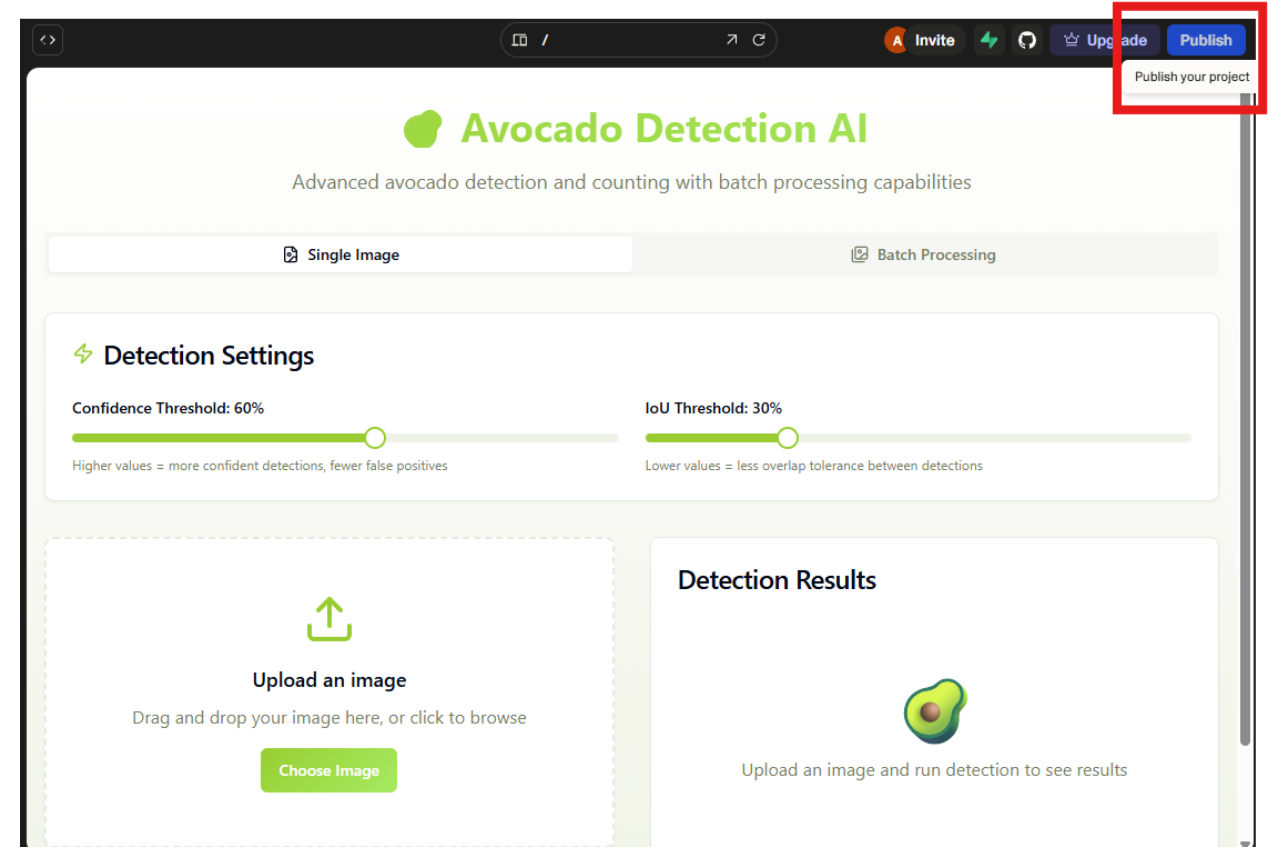
Tips:
- Error Management: Prompt “Include error handling for API issues” to ensure smooth operation.
- UI Customization: Prompt “Design a modern, sleek interface” for a polished user experience.
- Testing: Use diverse images (e.g., avocados in various settings) to verify reliability.
Step 3: Test and Scale
Test the app with sample images or videos. Prompt “Track detection counts in a log” to monitor performance. Lovable and Roboflow’s infrastructure scales seamlessly. If API limits are hit, prompt “Reduce API calls for efficiency” or explore a Roboflow Pro plan.
Understanding Model Licensing
Proper licensing is essential for public or commercial apps to avoid legal complications. Restrictive licenses like AGPL-3.0 (e.g., YOLOv8) require sharing your app’s source code if distributed publicly, which may conflict with proprietary goals.
Recommended Licenses
Select permissive licenses for greater flexibility:
- Apache 2.0: Perfect for proprietary apps (e.g., RF-DETR, YOLO-NAS).
- MIT: Highly adaptable for development (e.g., Roboflow 2.0, TrOCR).
Roboflow’s Licensing Assistance
Roboflow clearly lists licensing details on Universe model pages and offers commercial licenses for restrictive models through Pro plans. Visit roboflow.com/licensing or contact Roboflow sales for customized solutions.
Best Practice: Use Lovable to check the model’s license or verify it on Universe. For commercial projects, opt for Apache 2.0 or MIT models, or secure a Roboflow commercial license.
Conclusion: Lovable Object Detection
Lovable and Roboflow’s API make it simple to build scalable, compliant computer vision apps, such as an avocado counter for agriculture or a defect detector for manufacturing, in just hours. Begin your vision project now!
Here are some additional tutorials you might also enjoy, where you can learn how to leverage LLMs using Roboflow: building computer vision apps with Vercel V0, and building computer vision apps with Replit.
Written by Aarnav Shah
Cite this Post
Use the following entry to cite this post in your research:
Contributing Writer. (Sep 22, 2025). Lovable Object Detection: Building Vision Apps with Roboflow. Roboflow Blog: https://blog.roboflow.com/lovable-object-detection/
